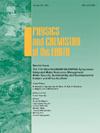综合PSInSAR和SBAS-InSAR分析用于滑坡探测和监测
IF 3
3区 地球科学
Q2 GEOSCIENCES, MULTIDISCIPLINARY
引用次数: 0
摘要
巴基斯坦北部喀喇昆仑公路(KKH)的下罕萨段由于重力、构造应力以及冰川和河流的侵蚀,极易发生山体滑坡,对基础设施、社区和KKH构成重大威胁。准确和有效的探测和监测对于灾害监测和预警至关重要。本研究利用Sentinel-1两年多的SAR数据,结合永久散射体合成孔径雷达(PSInSAR)和小基线子集(SBAS- insar)技术来解决单个技术的局限性,如SBAS的潜在误差积累和PSInSAR的稀疏散射体分布。PSInSAR技术的平均相干性比SBAS高12.5%,但像元密度比SBAS低9倍。综合方法显示,平均位移率从57毫米/年(隆起)到- 146毫米/年(下沉)不等,并确定了36个潜在的滑坡。Khana Abad和Nagar Khas的滑坡最为活跃,年平均变形量分别为23.42和54.26 mm。对滑坡的空间分布和变形特征进行了细致的分析,突出了包括岩性和断层线在内的区域地质构造对滑坡活动的显著影响。本文章由计算机程序翻译,如有差异,请以英文原文为准。
Integrated PSInSAR and SBAS-InSAR analysis for landslide detection and monitoring
The Lower Hunza section of the Karakoram Highway (KKH) in Northern Pakistan is highly prone to landslides due to gravity, tectonic stress, and erosion from glaciers and rivers, posing significant threats to infrastructure, communities, and KKH. Accurate and efficient detection and monitoring are essential for disaster monitoring and early warning. This study utilized Sentinel-1 SAR data over two years, combining Permanent Scatterers Synthetic Aperture Radar (PSInSAR) and Small Baseline Subset (SBAS-InSAR) technologies to address individual technique limitations, such as potential error accumulation of SBAS and sparse scatterer distribution of PSInSAR. The PSInSAR technique has a 12.5 % higher mean coherence than SBAS, but the density of pixels in the PSInSAR method is nine times less than that of SBAS. The combined approach revealed average displacement rates ranging from 57 mm/year (uplift) to −146 mm/year (subsidence) and identified 36 potential landslides. The landslides located in Khana Abad and Nagar Khas were found to be the most active, displacing with the mean slope deformation of 23.42 and 54.26 mm annually. The spatial distribution and deformation characteristics were meticulously analyzed, highlighting the significant influence of regional geological structures, including lithology and fault lines, on landslide activity.
求助全文
通过发布文献求助,成功后即可免费获取论文全文。
去求助
来源期刊

Physics and Chemistry of the Earth
地学-地球科学综合
CiteScore
5.40
自引率
2.70%
发文量
176
审稿时长
31.6 weeks
期刊介绍:
Physics and Chemistry of the Earth is an international interdisciplinary journal for the rapid publication of collections of refereed communications in separate thematic issues, either stemming from scientific meetings, or, especially compiled for the occasion. There is no restriction on the length of articles published in the journal. Physics and Chemistry of the Earth incorporates the separate Parts A, B and C which existed until the end of 2001.
Please note: the Editors are unable to consider submissions that are not invited or linked to a thematic issue. Please do not submit unsolicited papers.
The journal covers the following subject areas:
-Solid Earth and Geodesy:
(geology, geochemistry, tectonophysics, seismology, volcanology, palaeomagnetism and rock magnetism, electromagnetism and potential fields, marine and environmental geosciences as well as geodesy).
-Hydrology, Oceans and Atmosphere:
(hydrology and water resources research, engineering and management, oceanography and oceanic chemistry, shelf, sea, lake and river sciences, meteorology and atmospheric sciences incl. chemistry as well as climatology and glaciology).
-Solar-Terrestrial and Planetary Science:
(solar, heliospheric and solar-planetary sciences, geology, geophysics and atmospheric sciences of planets, satellites and small bodies as well as cosmochemistry and exobiology).
 求助内容:
求助内容: 应助结果提醒方式:
应助结果提醒方式:


